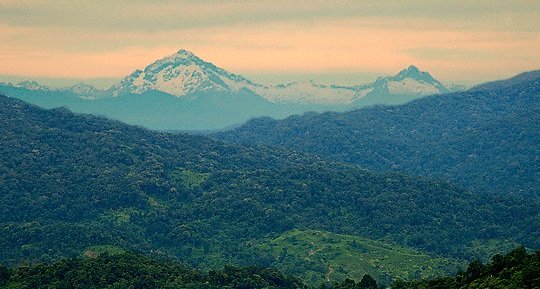Pangsau Pass or Pan Saung Pass, 3,727 feet (1,136 m) in altitude, lies on the crest of the Patkai Hills on the India-Burma(Myanmar) border. The pass offers one of the easiest routes into Burma from the Assam plains. It is named after the closest Burmese village, Pangsau, that lies 2 km beyond the pass to the east. It is the reputed route of the 13th century invasion of Assam in India by the Ahoms, a Shan tribe. Prospected by the British in the late 19th Century as a possible railway route from India to Myitkyina in north Burma through the Hukawng Valley, the pass became famous during World War II for being the initial obstacle encountered by American General “Vinegar Joe” Stilwell’s forces in their effort to build a land route to isolated China after the fall of Burma to the Japanese.
The Ledo Road began at Ledo, the railhead, and passed through Lekhapani, Jagun, Jairampur (the Assam-Arunachal Pradeshboundary and beginning of Inner Line), and Nampong before switchbacking steeply upwards through densely forested hills to the pass, 12 km away. The distance from Ledo to Pangsau Pass is 61 km (38 mi). Because of the fierce gradients and the mud which made getting up to the pass difficult, it was nicknamed “Hell Pass” during the war.
The Pangsau Pass Winter Festival is a global village event organized every year in Nampong, Arunachal Pradesh.
(Still well road, World War cemetery II and lake of no return under Jairampur Circuit.)




